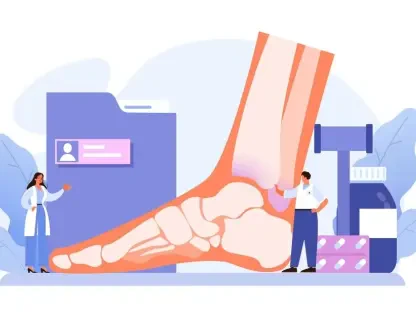Unpacking the Health Insurance Challenge for a Vulnerable Demographic
Imagine turning 26 and suddenly facing a financial barrier that could jeopardize access to essential healthcare, a stark reality for millions of young adults in the United States who are forced to navigate the so-called “26 insurance cliff,” where they age out of parental health plans. As a critical market segment, these individuals represent a growing concern within the health insurance industry, grappling with affordability amid expiring subsidies and shifting economic landscapes. This analysis dives deep into the current state of health coverage for young adults, examining key trends, data-driven insights, and future projections. The purpose is to illuminate the systemic challenges and market dynamics at play, offering a comprehensive view of how this crisis impacts both individuals and the broader insurance sector.
Market Dynamics: Trends Shaping Health Insurance for Young Adults
The Subsidy Expiration Impact: A Looming Financial Strain
A dominant trend in the health insurance market is the expiration of premium subsidies that have supported Affordable Care Act (ACA) marketplace plans. As of now, without legislative intervention, these subsidies are no longer cushioning costs, leading to projected premium increases of up to 75% for many enrollees. This drastic spike threatens to push millions out of coverage, with estimates suggesting a potential loss of insurance for around 4 million individuals, a significant portion of whom are young adults. The market response has been mixed, with insurers bracing for lower enrollment numbers while advocacy groups highlight the urgent need for policy renewal. This financial strain is reshaping consumer behavior, as many in this age group may opt for minimal or no coverage, further destabilizing the risk pool for insurers.
Gig Economy Growth: A Barrier to Employer-Sponsored Plans
Another pivotal trend influencing this demographic is the rise of non-traditional employment, particularly within the gig economy. Unlike previous generations who often secured stable jobs with benefits by their mid-20s, a substantial number of today’s young adults engage in freelance or contract work that rarely includes employer-sponsored health plans. Data indicates that over 30% of workers under 30 participate in gig roles, creating a gap in coverage access as they reach the critical age of 26. Insurance providers are struggling to adapt to this shift, with marketplace plans becoming the primary—but often unaffordable—option. This trend underscores a disconnect between modern workforce realities and traditional insurance models, posing a challenge for market stakeholders to innovate.
Regional Disparities and Systemic Gaps in Coverage Options
Beyond employment trends, systemic weaknesses and regional variations significantly affect the health insurance market for young adults. In certain states, ACA marketplace options remain limited or prohibitively expensive, even when subsidies were in place, while others benefit from Medicaid expansion as a safety net. However, not all regions have adopted such expansions, creating a patchwork of access that leaves many at risk. Industry analysis reveals that plans often fail to meet the needs of those with serious medical conditions, heightening the danger of underinsurance—a misconception fueled by the notion that younger individuals require less comprehensive care. These disparities highlight a fragmented market where geographic location can determine coverage viability, complicating efforts to address the crisis uniformly.
Future Projections: Navigating an Uncertain Insurance Landscape
Policy Shifts and Potential Market Responses
Looking toward the coming years, the health insurance market for young adults stands at a crossroads. Projections suggest that without permanent subsidy extensions or alternative reforms, the uninsured rate among this demographic could climb significantly, potentially reaching levels not seen in over a decade. Analysts anticipate that legislative gridlock may delay immediate solutions, but there is growing discussion around a public insurance option as a means to broaden access. Insurers are also expected to face pressure to develop more flexible, affordable products tailored to the needs of a transient workforce. These policy and market responses will likely shape enrollment trends and financial stability for both consumers and providers over the next few years.
Economic Trends and the Push for Portable Coverage
Economic forecasts point to the continued expansion of gig and freelance work, further necessitating a reevaluation of how health benefits are structured. Market experts predict a gradual shift toward portable insurance models that are not tied to specific employers, allowing for greater flexibility among young adults who frequently change roles. Such innovations could stabilize coverage rates, but they require substantial investment and regulatory support to gain traction. Additionally, rising healthcare costs are expected to exacerbate affordability concerns, potentially driving demand for technology-driven solutions like telehealth platforms to lower expenses. These economic undercurrents will play a critical role in determining whether the market can adapt to the evolving needs of this age group.
Technological Innovations as a Market Equalizer
Technology is poised to become a game-changer in addressing coverage challenges for young adults. Digital insurance platforms are emerging as tools to simplify plan comparisons and enrollment, potentially increasing uptake among tech-savvy consumers in this demographic. Projections indicate that partnerships between insurers and telehealth providers could reduce costs and improve access, particularly for those in underserved regions. However, the effectiveness of these innovations hinges on overcoming barriers such as digital literacy and data privacy concerns. As the market evolves, technology’s integration into insurance offerings may serve as a critical lever to mitigate the impact of subsidy losses and systemic gaps.
Reflecting on the Market Analysis: Strategic Pathways Forward
Looking back, this market analysis delved into the profound challenges faced by young adults navigating health insurance at age 26, uncovering trends like subsidy expirations, gig economy barriers, and regional disparities that define the landscape. The examination of future projections revealed a market teetering on the edge of significant shifts, with policy inaction threatening to deepen the crisis. For insurers, the takeaway is a need to pivot toward innovative, flexible products that cater to a non-traditional workforce. Policymakers, on the other hand, face the imperative to explore sustainable funding for subsidies or alternative coverage models to prevent a surge in uninsured rates. Strategically, stakeholders across the board are encouraged to invest in technological solutions and advocate for portable benefits, ensuring that the health insurance market can better serve a generation at risk of falling through the cracks.









